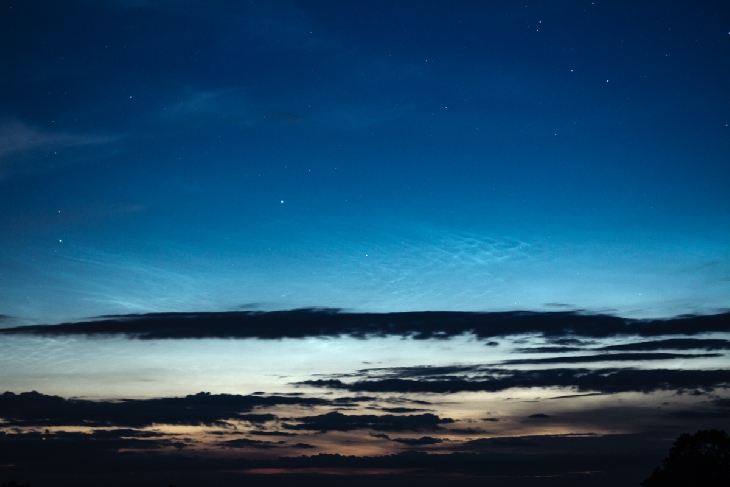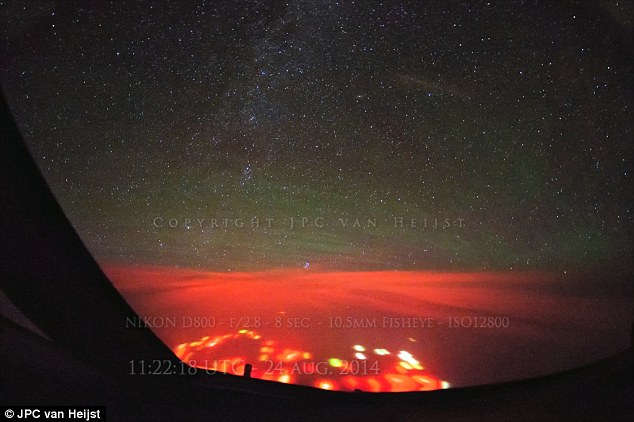For the second time in just a few days, noctilucent clouds (also known as NLCs) have been sighted in Germany, SpaceWeather reports. Although their northern season is just getting underway, researchers aren't sure why these early NLCs seem to favor German longitudes.This morning shortly before sunrise, Chris Kranich spotted the telltale electric-blue ripples over Kiel:

© Chris KranichNoctilucent clouds
"These second noctilucent clouds of the season appeared shortly after astronomic midnight and rose over the horizon for about two hours before disappearing in the morning twilight," says Kranich.
Noctilucent cloud season, which begins every year in late spring and stretches into summer, is just getting underway. NASA's AIM spacecraft saw the first NLCs of the northern season on May 24th. Ground-level sightings followed soon thereafter - first on May 30 and then on June 3. So far all of the sightings reported to spaceweather.com have come from Germany.
AIM researchers aren't sure why these early NLCs seem to favor German longitudes, but they're looking into it.
See more noctilucent clouds captured by Chris Kranich
here.
Source: SpaceWeather

Comment:
Noctilucent cloud intensity is a precursor to changes in global weather patterns. And it should be no surprise that the climate is not at all what it used to be, say 10 years ago. In fact Noctilucent clouds have increasingly become a more ordinary sight at lower latitudes, with the increased fireball and meteor activity in our skies (loading the skies with dust), along with the severe cooling of our upper atmosphere from low solar activity.
Noctilucent outburst over Europe
More cometary dust in the atmosphere: Noctilucent clouds appear above Gateshead in the UK late at night
To get ahead on what our solar system is up to with its ominous weather, read:
Earth Changes and the Human-Cosmic Connection (The Secret History of the World Book 3)